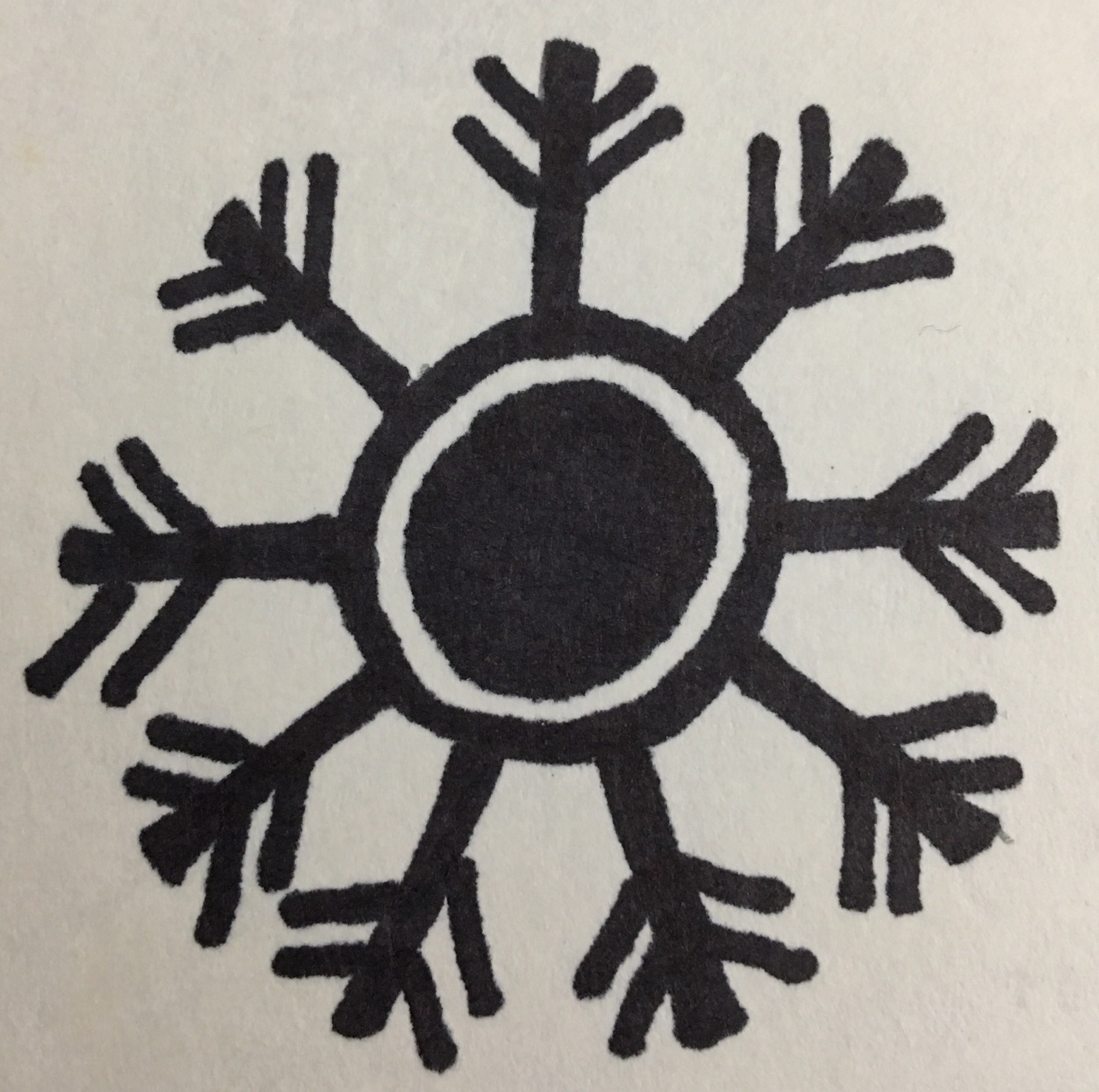the Lone Star
The Lone Star is a one-of-a-kind flowering plant found in the wilds of the The Lost Coast. More precisely it is endemic to The Fleece, one of the most northern bays of Farside. Because of its rarity and its extraordinary medicinal property, the Lone Star is thought to have been introduced to Alven by the Ancestors many millennia ago.
Basic Information
Anatomy
The Lone Star is a small plant forming a rosette of lanceolate, dark green leaves just above the ground. Every so often, the rosette will through up a large single brilliant white flower on a single stalk.
The flower has five petals and looks like a star, hence its name. A showy knot of pure gold stamens fills in the centre of the flower. The leaves themselves are as soft as velvet and it is said that dew drops look like molten silver when they hang on the foliage at dawn.
The flower has five petals and looks like a star, hence its name. A showy knot of pure gold stamens fills in the centre of the flower. The leaves themselves are as soft as velvet and it is said that dew drops look like molten silver when they hang on the foliage at dawn.
Genetics and Reproduction
The Lone Star does not set seeds. Its flowers seem sterile. The plant reproduces by stolons. Every so often, not every year, the plants will produce a baby plant at the end of a short tendril.
The plantlet will root beside the mother plant if it finds suitable conditions for growth. Usually, when the mother plant has produced two or three plantlets in its life, it will wither and die. The Lone Star's colonies are small, no more than 9 or 10 plants are found together on the same spot.
The plantlet will root beside the mother plant if it finds suitable conditions for growth. Usually, when the mother plant has produced two or three plantlets in its life, it will wither and die. The Lone Star's colonies are small, no more than 9 or 10 plants are found together on the same spot.
Growth Rate & Stages
The plantlets will take two years or more to mature and produce their first flower. Happily, it seems that the plant is deer and rabbit-proof. It has no known enemies and is also left alone by slugs and beetles.
Leaves and flowers are always spotless as if the plant had grown all in one moment, and refused to suffer the ravages of time and weather.
Leaves and flowers are always spotless as if the plant had grown all in one moment, and refused to suffer the ravages of time and weather.
Ecology and Habitats
The Lone Star is a very rare plant and only grows around certain sheltered springs in the forest. It also does not grow far from the bay as it needs the mildness of the oceanic weather to thrive.
In general, Lone Star plants are found on mossy banks by the edge of water that does not freeze in winter (or very little). As such, it has the particularity of blooming nearly all year round.
The Bay people have tried to predict when and where the Lone Star will bloom but no one has ever noticed a pattern in the flowering plant.
Only regular checks on the known small patches of Lone Stars will reveal if a plant is about to bloom or not. The places where the plant grows are a well-guarded secret of the Fleece. Only family members and close associates know where to look for the plant - some of the plants' growing sites are dangerous to access and if one does not know the secret ways to them, could be extremely dangerous, even life-threatening.
What is known, is that the Lone Star will not grow too far from the Rucinon Ruins on the hill overlooking the harbour of Nedderhyve. With the value of the plant very high right now, there is a clear danger to the Lone Star.
The Kin have helped in guarding some of the most well-known patches of the plants by posting sentinels and other deterrents after some of the plants were completely rooted out by unknowns. Everyone in the town is aware of the plant's potential and fears its extinction if unscrupulous adventurers were to get their hands on the few plants in existence.
In general, Lone Star plants are found on mossy banks by the edge of water that does not freeze in winter (or very little). As such, it has the particularity of blooming nearly all year round.
The Bay people have tried to predict when and where the Lone Star will bloom but no one has ever noticed a pattern in the flowering plant.
Only regular checks on the known small patches of Lone Stars will reveal if a plant is about to bloom or not. The places where the plant grows are a well-guarded secret of the Fleece. Only family members and close associates know where to look for the plant - some of the plants' growing sites are dangerous to access and if one does not know the secret ways to them, could be extremely dangerous, even life-threatening.
What is known, is that the Lone Star will not grow too far from the Rucinon Ruins on the hill overlooking the harbour of Nedderhyve. With the value of the plant very high right now, there is a clear danger to the Lone Star.
The Kin have helped in guarding some of the most well-known patches of the plants by posting sentinels and other deterrents after some of the plants were completely rooted out by unknowns. Everyone in the town is aware of the plant's potential and fears its extinction if unscrupulous adventurers were to get their hands on the few plants in existence.
Biological Cycle
All the parts of the Lone Star are life-giving. The plant's uses are many:
The velvet leaves are used in teas to soothe pain, fevers and clear the mind. They are the less potent part of the plants but the most readily available. Most households in the Fleece keep a few leaves handy for common ailments.
Fevers can be deadly and are one of the most feared illnesses in children. The leaves have been found to be very effective in combatting them.
The flowers are baked into bread to increase women's fertility and are also known as an aphrodisiac. A posy of Lone Stars is a welcome gift to newlyweds.
The tubers are maybe the most sought-after part of the plant. However, only the tubers of withered plants are harvested. They are ground into a powder, then mixed with honey into a fine paste.
The paste has wonderful healing properties on cuts and other injuries. Many men of the bay with injured limbs have had it saved by the miracle paste. Its properties prevent infection from setting in.
A word of warning: one needs to know how to prepare and dose the Lone Star leaves. Consuming fresh leaves or tubers of the plant can actually induce a trance-like state which can be harmful, even deadly for the ingester.
Leaves and tubers need to be dried and prepared carefully to remove the harmful substance from the plant.
In Lowrhyve, there is a place known as Granny's Store where one can find all sorts of teas and remedies. Granny is the closest the Fleece has to an apothecary. Her shop has been open for thirty years now. Everyone knows her now as Granny, but Alana Flint came to Nedderhyve on one of the Hawkhyves ships and never left.
It was soon obvious that Alana was knowledgeable about plants and the different concoctions you could make from them. After helping a few of the villagers with some of their ailments, Alana gained their trust and in due course was instructed in the handling of the Lone Stars.
Her store always has some of the Lone Star paste and leaves on hand. Alana is also a very good midwife, but as she nears her 80th year, she has decided to take on two apprentices of her own, so they can run the store when she won't be able to do so.
One of her apprentices is none other than one of Woody Hawkyve's grandaughters: Karla Hawkyve. The young girl had expressed an interest in being a healer and asked Alina if she would take on Karla as her apprentice.
Her other apprentice could not be more different: Veri Cranber comes from the rural village of Nedderpoint.
Veri is the youngest daughter of Grean Cramber, a farmer and crofter from the other side of the bay. Karla and Veri cannot be more different but have formed a fast friendship around their passion for plants and healing.
Leaves
The velvet leaves are used in teas to soothe pain, fevers and clear the mind. They are the less potent part of the plants but the most readily available. Most households in the Fleece keep a few leaves handy for common ailments.
Fevers can be deadly and are one of the most feared illnesses in children. The leaves have been found to be very effective in combatting them.
Flowers
The flowers are baked into bread to increase women's fertility and are also known as an aphrodisiac. A posy of Lone Stars is a welcome gift to newlyweds.
Tubers
The tubers are maybe the most sought-after part of the plant. However, only the tubers of withered plants are harvested. They are ground into a powder, then mixed with honey into a fine paste.
The paste has wonderful healing properties on cuts and other injuries. Many men of the bay with injured limbs have had it saved by the miracle paste. Its properties prevent infection from setting in.
A word of warning: one needs to know how to prepare and dose the Lone Star leaves. Consuming fresh leaves or tubers of the plant can actually induce a trance-like state which can be harmful, even deadly for the ingester.
Leaves and tubers need to be dried and prepared carefully to remove the harmful substance from the plant.
Granny's Store
In Lowrhyve, there is a place known as Granny's Store where one can find all sorts of teas and remedies. Granny is the closest the Fleece has to an apothecary. Her shop has been open for thirty years now. Everyone knows her now as Granny, but Alana Flint came to Nedderhyve on one of the Hawkhyves ships and never left.
It was soon obvious that Alana was knowledgeable about plants and the different concoctions you could make from them. After helping a few of the villagers with some of their ailments, Alana gained their trust and in due course was instructed in the handling of the Lone Stars.
Her store always has some of the Lone Star paste and leaves on hand. Alana is also a very good midwife, but as she nears her 80th year, she has decided to take on two apprentices of her own, so they can run the store when she won't be able to do so.
One of her apprentices is none other than one of Woody Hawkyve's grandaughters: Karla Hawkyve. The young girl had expressed an interest in being a healer and asked Alina if she would take on Karla as her apprentice.
Her other apprentice could not be more different: Veri Cranber comes from the rural village of Nedderpoint.
Veri is the youngest daughter of Grean Cramber, a farmer and crofter from the other side of the bay. Karla and Veri cannot be more different but have formed a fast friendship around their passion for plants and healing.






I like how you included the relationship of the surrounding culture. It seems fitting that a culture that has found use of a plant with a low reproduction rate, and particular growing conditions would take great pains to protect is as they do. Possible typo: I think you mistyped Granny's name at one point. In the first paragraph, she is called Alana, but in the 4th paragraph, she's called Alina (unless these are two different characters and I missed something.)
Thanks well spotted! Yeah, I've read this several times, but words tend to blur in the end. Thank you for reading again. :D